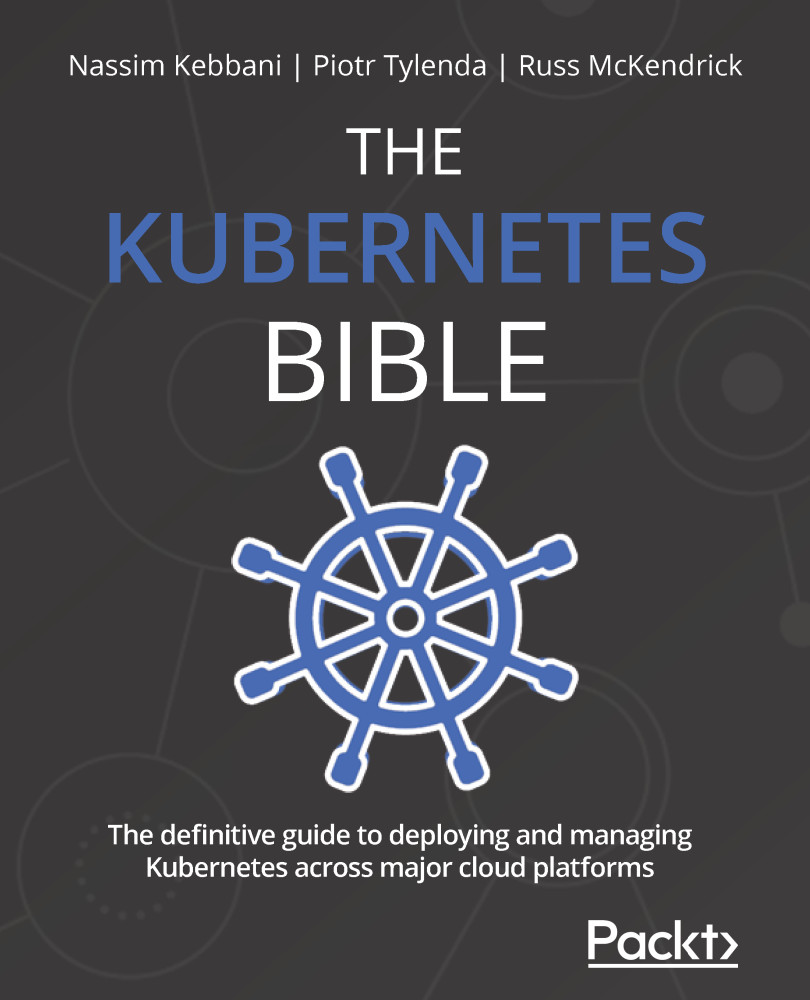-
Book Overview & Buying

-
Table Of Contents

The Kubernetes Bible
By :

The Kubernetes Bible
By:
Overview of this book
 Free Chapter
Free Chapter
 Sign In
Start Free Trial
Sign In
Start Free Trial

 Free Chapter
Free Chapter
This chapter is probably the most important one in this book. Here, we are going to discuss the concept of Pods, which are the objects Kubernetes uses to launch your Docker containers. Pods are at the heart of Kubernetes and mastering them is essential.
In Chapter 3, Installing Your First Kubernetes Cluster, we said that the Kubernetes API defines a set of resources representing a computing unit. Pods are resources that are defined in the Kubernetes API that represent one or several Docker containers. We never create containers directly with Kubernetes, but we always create Pods, which will be converted into Docker containers on a worker node in our cluster.
At first, it can be a little difficult to understand the connection between Kubernetes Pods and Docker containers, which is why we are going to explain what Pods are and why we use them rather than Docker containers directly. A Kubernetes Pod can contain one or more Docker containers...
